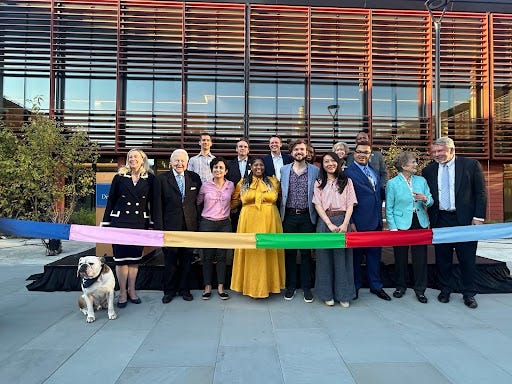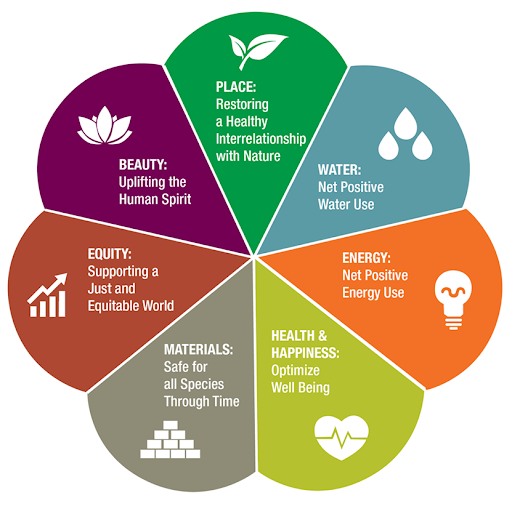Bright Spot: Building the Future - 10/11/2025
WEEKEND SPECIAL: A Bright Spot —A Visit to Yale Divinity School’s new Living Village
Exploring the policy, politics, and economics of the clean energy transition
Subscribe to Transition Finance Weekly here. (Tell your friends!)
This week, I got to take a break from the onslaught of bad news to celebrate something remarkable: the dedication of Yale Divinity School’s new Living Village.
University leadership dedicated Yale Divinity School’s Living Village Monday with a ceremony bringing together the arts, religion, and ecological stewardship.
This new residential hall is a powerful example of what the future can look like: the Living Village is designed to be net-zero-energy, net-zero-water, zero-waste, and fully integrated into its environmental surroundings. The goal is not just to reduce harm — the Living Village has been designed to be regenerative.
The Living Village meets the standards of the Living Building Challenge (LBC), often called the world’s most rigorous measure of sustainable design. Under the Challenge, buildings must produce more energy than they use, treat and reuse all water on-site, and be constructed with safe, local, and low-carbon materials.
The Living Building Challenge petals represent performance areas where a building must succeed.
For Yale’s project, that means on-site solar panels are projected to generate roughly 10% more energy than the community consumes, making it net-positive in energy use. The system even has the ability to island from the grid, running independently in the event of an outage, demonstrating that sustainability and resilience go hand in hand.
Water and waste systems are just as ambitious. Rooflines and canopies are designed to collect about 300,000 gallons of rainwater a year, while wastewater is treated on-site and reused for irrigation and toilets. The landscape is engineered to handle storms so efficiently that it outperforms precolonial forest conditions in both peak flow and volume. This isn’t just symbolic, it’s a demonstration of what it means for a modern community to live within its ecological means.
Material choices are intentional. The project replaces much of the conventional steel with mass timber, which not only cuts embodied carbon but actually stores it. Concrete is formulated with up to 40% less Portland cement, dramatically lowering emissions. Local stone connects the building to its New England context while minimizing long-term maintenance. Every component, from the solar shingles to the structural wood beams, was chosen to serve a purpose beyond aesthetics.
More about the Living Village:
The Living Village is a project my dad, Christopher Glenn Sawyer, has lovingly shepherded for over a decade alongside Dean Greg Sterling and countless others. Once an idea, it is now home to 50 students and is the first collegiate residential building to meet the rigorous Living Building Challenge standard.
Beyond its lightweight footprint, the new campus is a theological statement: to train as a faith leader today means engaging with the responsibilities of ecological stewardship. Yale has been home to the Forum on Religion and Ecology for over two decades, recognizing that faith communities can and are playing an active role in addressing the most pressing environmental challenges of our time, from climate to biodiversity loss to industrial pollution and land degradation.
As this year commemorated the 10th year of the release of Pope Francis’ encyclical, Laudato Si, it is so energizing to see the Divinity School embed an understanding of climate action into both its practice and preaching in such a complete and steading way. In a time when we are all looking for renewed leadership on climate, this quietly speaks volumes.
As Pope Francis then wrote: “The urgent challenge to protect our common home includes a concern to bring the whole human family together to seek a sustainable and integral development, for we know that things can change.”
Leadership like this — which is not just about avoiding negative externalities in what we build, but about crafting a positive and productive relationship as part of a greater ecosystem — will define the next generation of climate leadership. As the clean energy transition accelerates, projects like this remind us that success isn’t just measured in megawatts of solar or tons of CO2E, but in how we change the way we live, build, and care for the world around us.
Views inside and out.





